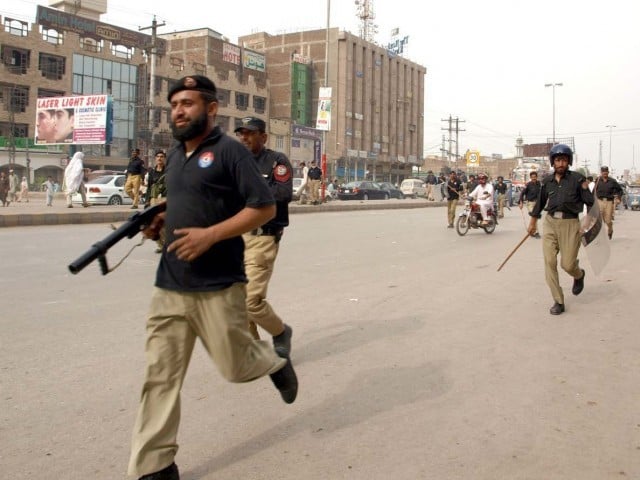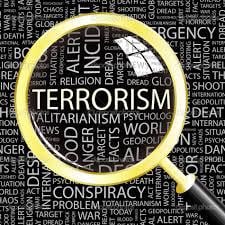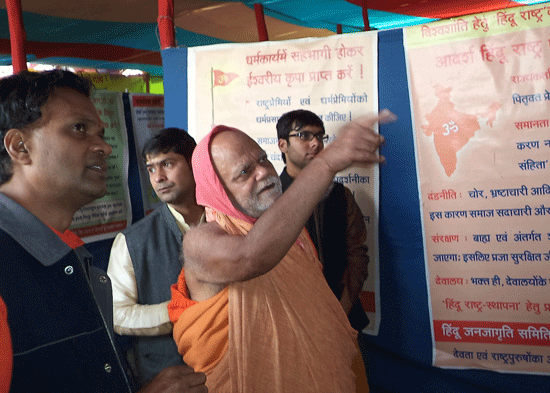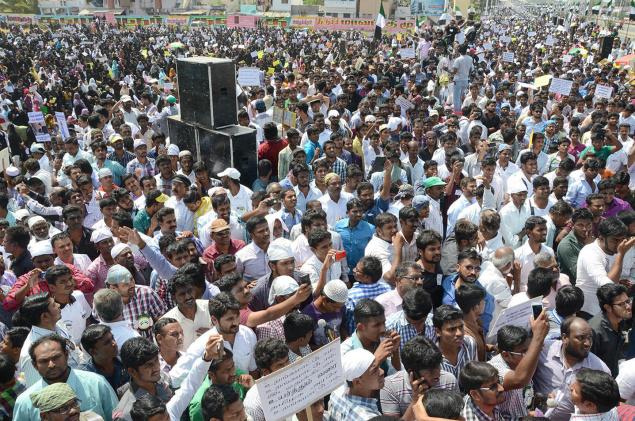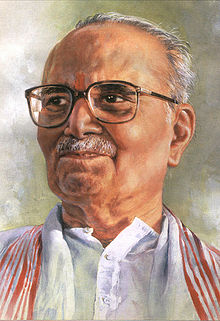January 31, 2014
Magh Shuklapaksha 1, Kaliyug Varsha 5115
The First National Investigation Day and First Shri Radha Vinod Raju Memorial Lecture by M K Narayanan, Governor of West Bengal :
Topic: National Security - The Expanding Terrorist Dynamic
The subject of my Lecture today will be ‘National Security: The Expanding Terrorist Dynamic.’ I have taken the liberty of changing the title of the Lecture from Dimension’ to ‘Dynamic’ given the rapidly evolving nature of terrorism”. Terrorism today is ‘dynamic’ rather than static’, and hence I felt that ‘dynamic’ is more appropriate to describe the phenomenon than ‘dimension.’
The NIA was set up for the reason that existing Agencies were not adequately equipped to investigate such a rapidly changing entity as Organized terrorism or its evolving mutant – leaderless or individual jihad. NIA was constituted by an Act of Parliament, and created as a specialized investigative agency, specifically mandated to investigate and prosecute offences affecting the sovereignty, security and integrity of India.
The NIA can only investigate and prosecute offences mentioned in the Schedule of the Act. It has statutory sanction to provide, as well as seek, assistance from intelligence and investigative agencies of the Central and State Governments. It is also the nodal agency for analyzing information pertaining to terror funding and circulation of Fake Indian Currency Notes (FICN). The mandate or charter of the NIA is, thus, vast but clearly focused on certain specific areas.
As the National Security Advisor when the NIA was set up, I was privy to the discussions and deliberations that led to the establishment of the NIA. Constituted in the aftermath of the November 26 2008 terrorist attacks on multiple targets in Mumbai, the NIA is primarily intended to investigate important interstate and intrastate terrorist crimes. The NIA, hence, fulfils a need keenly felt since 2005 (and even earlier), for a specialized investigative agency to handle terrorist offences. 26/1112008 acted as a catalyst in hastening the process.
Notwithstanding the initial problems it faced, such as lack of manpower and
infrastructure, the NIA already has quite a few achievements to its credit. These 2 include: the detection of the Delhi High Court blasts case; detection of the Hyderabad twin blasts working out the Bodh Gaya and Patna blast cases as also the Kozhikode bomb blast case; reworking the Malegaon Bomb Cases; effecting the arrests of UNLF Chairman R. K. Meghan and NSCN’s Anthony Shimray, etc. My congratulations to the NIA for these successes, and also for other instances. which I am referring to here.
The Regional Security Environment:
It is because the NIA was created to deal with a special contingency, viz., investigating terrorist offences, that I have consciously chosen Terrorism as the subject of my talk today, I propose in the course of my Lecture to highlight its expanding dynamic, thus making the NIA still more relevant as time passes. The choice of Terrorism as the subject of my lecture today is also dictated by the deteriorating security environment in our immediate and extended neighborhood, which directly impacts our security.
Contrary to what many security and strategic analysts in the West profess, Terrorism remains a grave threat to the civilized world. The so-called demise of Al-Qaeda, is an unfounded myth. The reality is that global terrorism is expanding rapidly, specially in Asia including Russia, and parts of North Africa. Today, terrorism poses the gravest challenge ever, and of a kind that has never been seen previously.
The perceived wisdom today is that the economic pendulum has shifted from the West to the East. What is less often articulated is that the focus of terrorism – apart from its intensity – also has shifted eastwards, essentially towards West, Central, South and South East Asia. This is unfortunately happening at a time when Asian economies are poised for growth. It is a resurgence of fundamentalist extremist and radicalist tendencies, which_’ are aggravating fault lines in many Asian societies. The patterns of conflict vary. For instance, countries to India’s West like Egypt, Syria, Tunisia, Afghanistan and Pakistan, arc wrestling with problems that involve hardline Islamist groups. To India’s East, Bangladesh faces a similar problem. In other parts of South, South East and East Asia, such as Maldives, Nepal, Sri Lanka and Myanmar, and further East, Indonesia and Thailand, there are new patterns of conflict emerging involving religion, ethnicity and politics.
Given India’s location, it is easy to see how the threat posed by terrorism – most of which emanates from outside the country’s borders is dependent on what prevail Is in our volatile and difficult neighborhood. In Afghanistan and Pakistan, a combination of State weakness, and the presence of myriad terrorist groups in both countries, constitutes a direct threat. Taliban extremism in both countries shows no signs of muting itself Surrender to extremist forces like the Taliban in Afghanistan and Pakistan’s willingness to hold unconditional talks with the Taliban, thus have the gravest consequences for us.
What is particularly worrying is that Pakistan shows no inclination to desist from pursuing ‘high risk’ strategies. It appears determined to support Jihadist elements as a strategic instrumentality to keep India off balance. Pakistan’s newly revealed Army doctrine even stipulates “disproportionate responses” in future wars with India -_ implying a willingness to take recourse to the nuclear option in the event of India taking any counter measures against terror attacks like the Mumbai attack. We, hence, have to be prepared for more attacks of this kind.
Refinements in terrorist methodology
It would, therefore, be a grievous error if a decline in the number of terrorist ‘-incidents across India in the past two years, is touted as evidence of terrorism being effectively checked. A similar decline IS in certain theatres of persistent violence, such as J&K and the North East, but there is a significant difference between the two situations.
Terrorist attacks, mainly by Pakistan-based terrorist outfits belong to a totally different genre. This is inherent in the nature of asymmetric warfare. Today, terrorism has mutated into a global franchise. The splintering of terrorist organizations such as the Al-Qaeda has actually spawned a whole new breed of terrorist organizations. Some are even more deadly than the Al-Qaeda and its earlier affiliates.
Several of the newer terrorist outfits are experimenting with hitherto unknown methods and techniques. Some of those, which have emerged, rival the Al-Qaeda and the Lashkar-e-Tayyaba in their capacity to unleash violence. I might here mention just a few, viz., The Al-Qaeda in the Maghreb (AQIM), the AI-Qaeda in the Arabian Peninsula (AQAP), the Al-Qaeda in Iraq (since renamed as the Islamic State of Iraq and Greater Syria (ISIS), Boko Haram, Al Shabab and the Harkat-ul-Jamat-e-Islami (IHJJI). The Indian Mujahideen mentored by the LeT is just one step behind these groups.
What is common among the groups is their reliance on advanced technology, which has made a critical difference to their lethal and destructive capabilities. Each of the organizations place a premium on technology acquisition, and seeks ways and means to fabricate more sophisticated triggering devices and extend at which explosives could be detonated. Some among them are also engaged in a search for acquiring a nuclear device.
With increasing numbers of non-State actors and mercenaries joining terrorist ranks, many of who possess special skills and techniques, terrorist outfits have also become the foremost exploiters of digital networks. They make extensive use of microcomputers and of cyber warfare techniques. Added to this, are the growing numbers of terrorist franchises, with the result that even smaller terrorist outfits are able to benefit from common operating procedures and cross cultural compatibilities.
Here are quite a few instances in India itself of terror outfits like the Indian Mujahideen benefitting from the ‘revolutionary philanthropy’ of the larger terrorist organizations – who provide them with arms, material and logistics to carryout attacks. Counter terrorism experts point out that terrorist outfits today are experimenting with ‘micro-terrorism’ — which involves low cost operations such as bombs placed in vehicles and planes — and ‘syndicated terrorism’ where disparate terrorist outfits share resources, information, and logistics to carry out coordinated attacks.
All this adds to the problem of securing pin pointed and accurate intelligence regarding a potential terrorist attack At another level, it means that warning times – even where intelligence is available – are getting reduced. Decision cycles are also getting compressed. Consequently, at a time when vulnerabilities are increasing, systemic risks and uncertainties have become greater.
Terrorism in India
Coming to terrorism in India, the nature of terrorist attacks varies. They are a reflection of the different facets of terrorism that are present on our soil.
An overwhelming number of terrorist incidents in our country have been the handiwork of Pakistan based terrorist outfits. These attacks have been mainly orchestrated by the LeT and the JeM and their acolytes, including the Bangladesh based HuJI. The Indian Mujahideen a creation of the LeT following the Gujarat riots in 2002 has been increasingly involved in terrorist incidents since 2005.
There are in addition, quite a few indigenous Islamist militant outfits – many, if not all, aligned with SIMI who have carried out terror attacks, particularly in the Southern States.
The first decade of the 21st Century witnessed several terrorist incidents in the country. An overwhelming number of the attacks were perpetrated by the LeT, individually or in coordination and collaboration with the JeM, the HuJI and the IM.
Perhaps the most audacious attempt was the attack on the Indian Parliament in 2001 and the most serious was the terrorist attack on multiple targets in Mumbai city in November 2008.
Between 2001 and 2008, a series of major attacks occurred – during 2002 on the American Centre in Kolkata and on Akshardham, Gandhinagar; the Delhi Serial Blasts in 2005: the explosions at the Sankatmochan Temple in UP and the serial train blasts on the Mumbai suburban train system in 2006; and the near 7
simultaneous blasts in Court complexes in Lucknow Varanasi and Faisabad in 2007. 2008 witnessed number of high profile terrorist attacks including those in Rampur (UP), in Jaipur (Rajasthan), Ahmedabad (Gujarat) and in Delhi prior to Mumbai.
The November 26 terrorist attack in Mumbai was significantly different from everything that had gone before it. 170 persons were killed, including 39 security personnel, and over 300 were injured.
Experts rate the attack as signifying a new era in terrorist attacks, reflecting both sophistication in the form of state-of-the-art communications using VOIP, use of a third country address, employment of GPS and reliance in the final stages on past methodologies, including use of firearms like AK 47 rifles and grenades. Most significant was the adoption of a training regimen imparted by Pakistan Special Forces and use of the sea route aimed at deception and to avoid detection.
More unusual was the use of an US national, David Hadley, who had been
recruited as an agent of the LeT to carry out a detailed recee of designated targets in Murnbai for attack.
The 26/11 attacks was entirely a LeT operation, backed by the Inter Service Intelligence of Pakistan. Actual monitoring and control was done by semi functionaries of the LeT, including Zakiur Rahman Lakhvi, Abu Hamza, Yusuf alias Muzammil, working under instructions from LeT chief Sajid Mir. Mir is an acolyte of the LeT chief: Hafiz Saeed, who is himself a fervent believer in the doctrines and ideology of the Palestinian Islamist, Abdulla Azam.
2011 witnessed the triple bombing in Mumbai killing 27 people, and a
The year 2010 witnessed attacks on the German Bakerv in Pune, which killed powerful bomb blast outside the Delhi High Court in September which killed 12 people; in 2013 four major terrorist incidents occurred in Hyderabad, Bangalore, Bodh Gaya and Patna.
The LeT network has been operational in India for nearly two decades. The LeT is one of the earliest affiliates of the Al-Qaeda network. Apart from India and Asia, the LeT operates in more than a score of countries across the globe, including in North America, Australia, Europe and Africa.
Most important among a dozen or more LeT controlled networks across India is the Indian Mujahideen. The IM consists mainly of disaffected Muslim youth,induced to come to Karachi (Pakistan) and then sent for training to the Pak-Afghan border or PoK. The Karachi Project, as this is known, has spawned quite a fewmodules dotted across different parts of the country’s landscape, which have which carried out a string of successful terrorist attacks.
A feature of IM attacks is the choice of ‘soft targets’ such as mass transportation systems, crowded markets, Court houses, and wherever people congregate in large numbers. More recently, Jewish institutions and foreign nationals have been added to this list of targets. Most of the attacks between 2010 and 2013 have been attributed to the IM though some like the German Bakery attack, were possibly in collaboration with the LeT.
Both the LeT and the IM networks remain active, despite claims to the contrary. It would be a mistake to believe otherwise. On the other hand, given the new terrorist dynamic, one should envisage the possibility of both the intensity and the number of attacks being stepped up in the period ahead. The likelihood of possible ‘suicide missions’ also needs to be factored into future calculations.
It is both worthwhile and relevant here to look at the additional support apparently exists for terrorist outfits in India. The role of the Students’ Islamic Movement of India (SIMI) is particularly significant in this respect. Currently banned, SIMI is seen as one of the fountainheads of Islamic extremist ideology in the country. It is now established that it often acts as an ideological mentor to cadres of the Indian Mujahideen, the Jam-Iyyathul-Ansar-ul- Muslimeen and Hizb-ut-Tehrir, all of whom are firm believers in jihad and the necessity of engaging in militant activities to achieve their ends. While the IM has carried out a series of attacks across the country the JIAM has carried out a series of terrorist attacks in Kerala and beyond.
The IM module led by Riyaz Bhatkal responsible for the serial blasts in Bangalore in July 2008, is a conspicuous example of the nexus that exists between the IM and above mentioned extremist outfits. acting under the overall guidance of the LeT. Complicating this situation is the complex web of internecine links between these organizations, and some of the other radical Muslim fronts that profess to be political in nature.
Separating terrorist outfits from bodies that profess to be political in character is indeed a major challenge. Intelligence reports do report the existence of links of some members of these bodies with the LeT, but confirmation of their involvement in terrorist actions has not been forthcoming. The Police in concerned States are convinced that ‘fringe members’ of these various organisations do act as conveyor belts and collaborators. Consequently, the ambit of terrorist activities in the country is steadily becoming enlarged, rather than diminishing.
Terrorism’s Expanding Dynamic:
India cannot also afford to ignore the extraordinary comeback of the several Al-Qaeda affil some old, some new across parts of Asia and Africa, and including Russia. Premature rejoicing about the demise of syndicated terrorism following the killing of Osama bin Laden, the perceived setbacks to outfits like the AQAP, Al-Shabab, and the advent of the Arab Spring have proved to be misplaced. Events over the past several months tell a different story, and there are lessons in this for us in India, both terms of terrorist ideology and tactics.
Perhaps for the first time in the history of terrorism worldwide, terrorist networks are currently seeking to hold territory rather than merely attack high profile and soft targets. It is estimated that terrorist networks worldwide today hold more territory than at any time in recent history. Also, the flood of new recruits to terrorist networks worldwide is perhaps the highest ever.
A conspicuous example of Terrorism’s inherent strength, and capacity for renewal, was the closure of several US Embassies in West Asia late last year based on a potential threat of a terrorist attack from the AI-Qaeda in the Arabian Peninsula. This was no panic reaction, but based on evidence that the AQAP had the capacity and the ability to franchise attacks on Western targets across the region.
Two ~ possibly three – terror attacks in quick succession recently, including a suicide bomb attack at a Railway Station in V Volgograd killing 17 and a second one in a bus also in Volgograd killing 14 persons, reveal that capacity and geographic range are no impediments for terrorists today. The attacks on son targets ~ a few weeks before the start of the Winter Olympics in Sochi and carried out far from the 11 usual locales like Chechnya and Dagestan – confirm this. In the backdrop of the over 2000 attacks and violent incidents in Russia – including more than 50 suicide attacks after the so-called Caucasian Caliphate came into existence some years back, it reflects the increasing spread and the kind of recruits available to terrorist outfits today. Many more ethnic jehadis – many of them recent converts to Islam – are greatly enlarging the terrorist pool.
The so-called failure of the Arab Spring has also provided opportunities for ideological revival of the terrorist movement. The conflict in Libya and the Civil war in Syria has brought in both weapons and manpower, leading to an extraordinary revival of networks once viewed as having been decimated. New ideologies are being spread through the internet and jihadi websites, and are attracting a host of new followers. The revival of the idea of a new Caliphate on the lines of the Century Abbasid Caliphate is aggravating the situation. Major gains have been made in this respect in Syria, where terrorist control not only Mosul but several other pockets, and in Iraq where Al-Qaeda affiliates control parts of two of Iraq’s most important cities.
In the process, rivalries and acrimony between leaders and different terrorist outfits are being set aside. The new imperative is to try and infuse new strength into terrorist franchises. The result is that from Tunisia to Libya to Syria to Sudan, various Al-Qaeda affiliates are perhaps in their strongest position today than ever before. The emergence of a new crop of leaders like AI Baghdadi in Syria/Iraq, and the trend of identifying ethnic recruits from countries targeted, adds a new dimension to the terrorist threat we have our own experience of the Indian Mujahideen.
Strengthening of several of the Al-Qaeda affiliates, will further add to the sinews of regional jihadi groups in our neighborhood like the LeT, the JeM and the HuJI. Furthermore, it would enable them to find new sanctuaries in a rapidly changing West Asia, and in a future Afghanistan which may be more conciliatory and committed to, or include, the Taliban.
The emerging dynamic suggests that there are no clear and defined ground rules which dictate how, when and where a terrorist attack takes place. Consequently, complacency that a reduction in the number of terrorist incidents signifies that the threat from terrorism has been reduced would be a serious error.
Conclusion:
I, hence, believe that the principal focus of the NIA should be the proper investigation of terrorist incidents and crimes. Currently, much of the literature concerning terrorism concerns the study of behavior of both individuals and groups, and why some of them lean towards terrorism and terrorist violence. The conclusion drawn is that wide and rapid information dissemination on the Internet has helped cross pollination among those inclined to such acts of violence, and this was leading to a quantum increase in terrorist violence.
Consequently, counter terrorism methodology is in the main confined to identifying such groups, adopting text analysis techniques, data mining, and the like. Whatever be the success of these new methodologies, it has so far not been possible through these means, to predict the exact location and timing of a terrorist attack. Given the current capabilities of counter terrorism analysis, it can at best predict the type of attacks that terror groups could carry out.
It is vitally important, therefore, to develop investigative techniques that will LIS with far more detailed information, and thereby intelligence, about terrorist modules and the evolving changes in terrorist methodologies. The NIA has, hence, a very kev role to play, and they must concentrate on investigation rather than branch out into speculative analysis. The Director and the senior leadership of the NIA should not get deflected from investigation, despite the many distractions, that may come in their path. They need to be resolute to avoid such pitfalls.
I would also urge the Government to avoid the temptation to utilize the NIA, given its capabilities and enlarge the NIA’s ambit of investigation. There has, unfortunately, been a tendency on the part of the Government in the case of other Central Agencies, to employ them in areas that do not fall within their core tasks and responsibilities. I also hope that in dealing with terrorist crimes, expediency does not overtake the necessity to deal with terrorism as the gravest of grave crimes. The presence of the Home Minister encourages me to believe that this will not happen, but I do appeal to all concerned to recognize the danger posed to the State and the country from terrorism.
(NIA)
